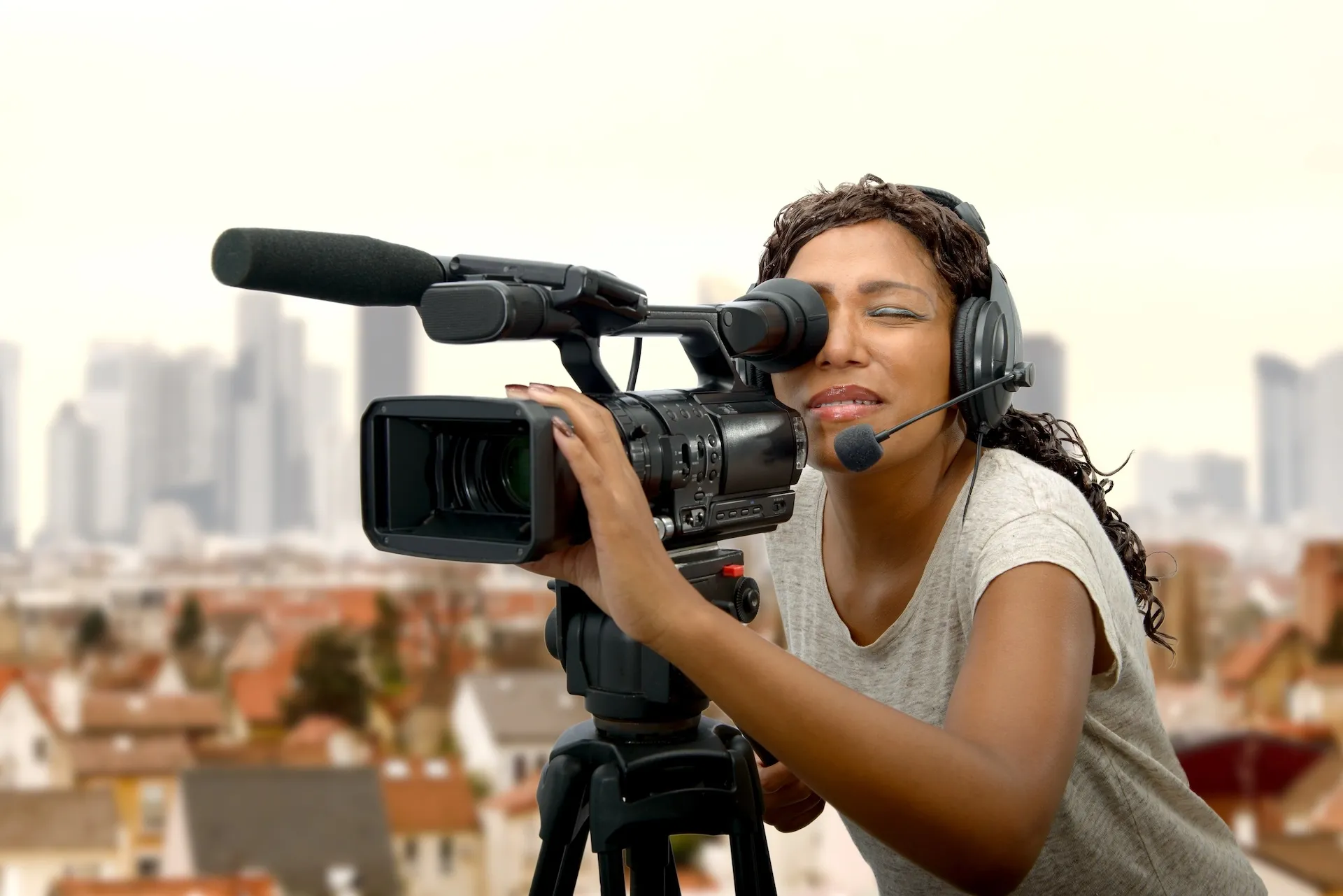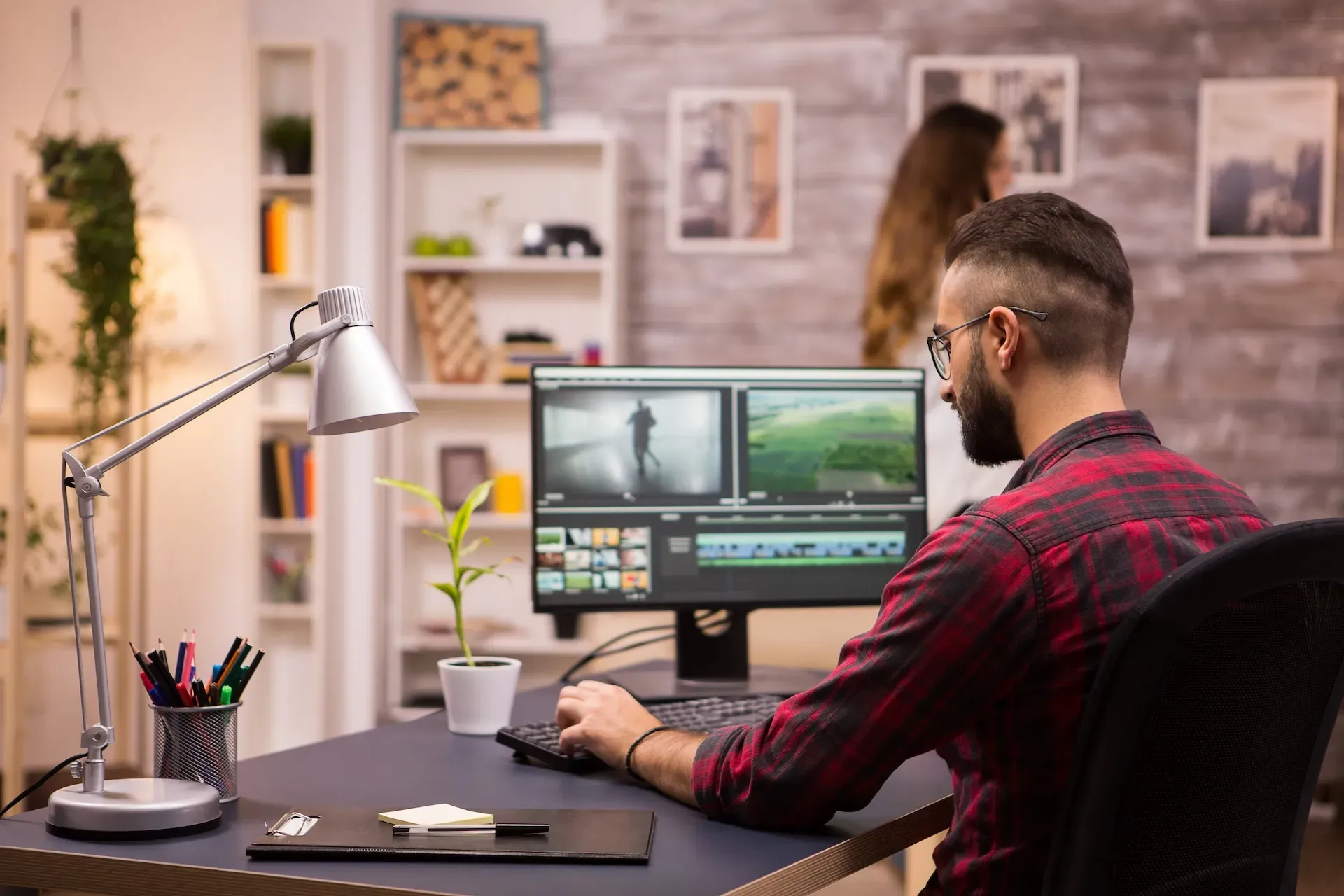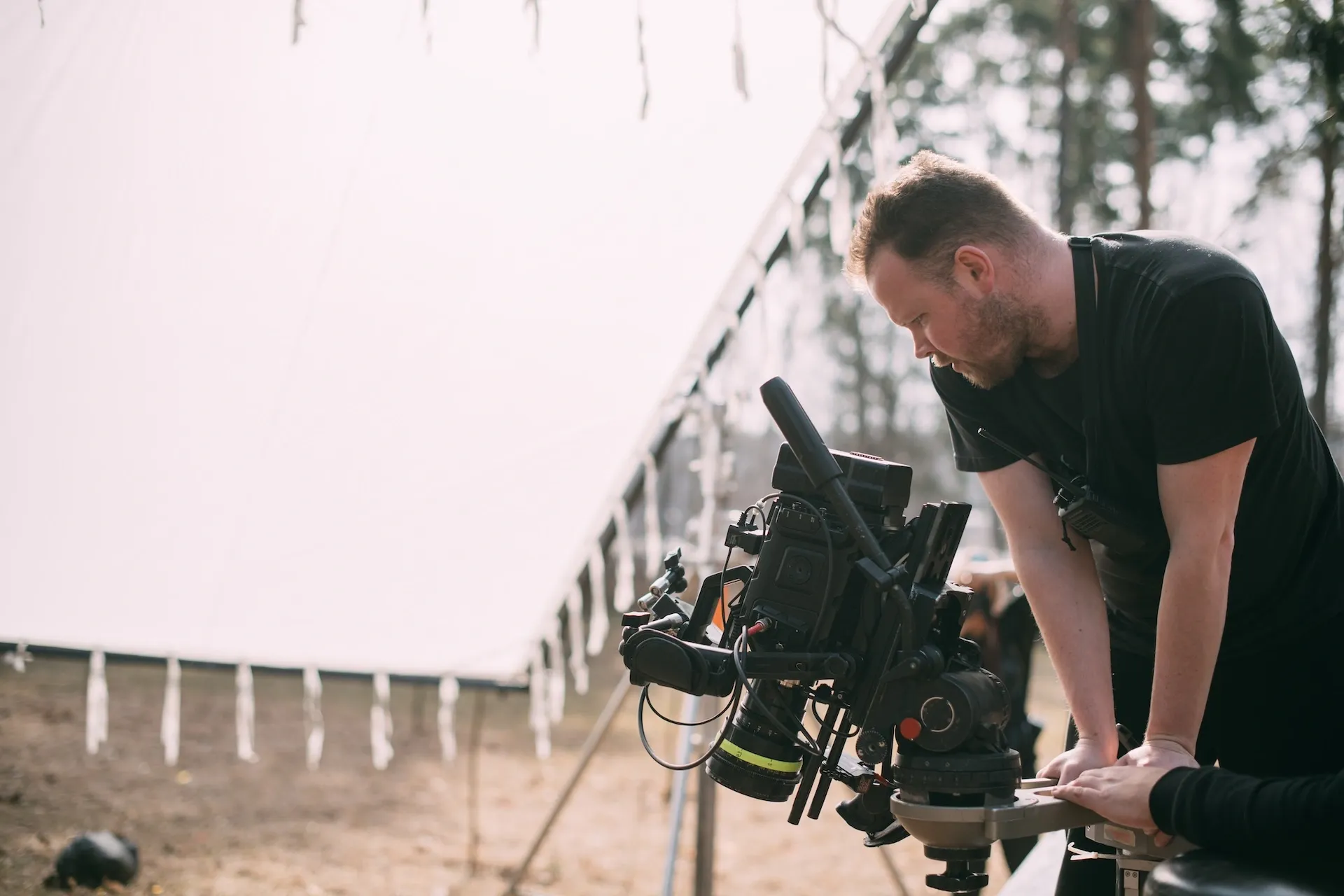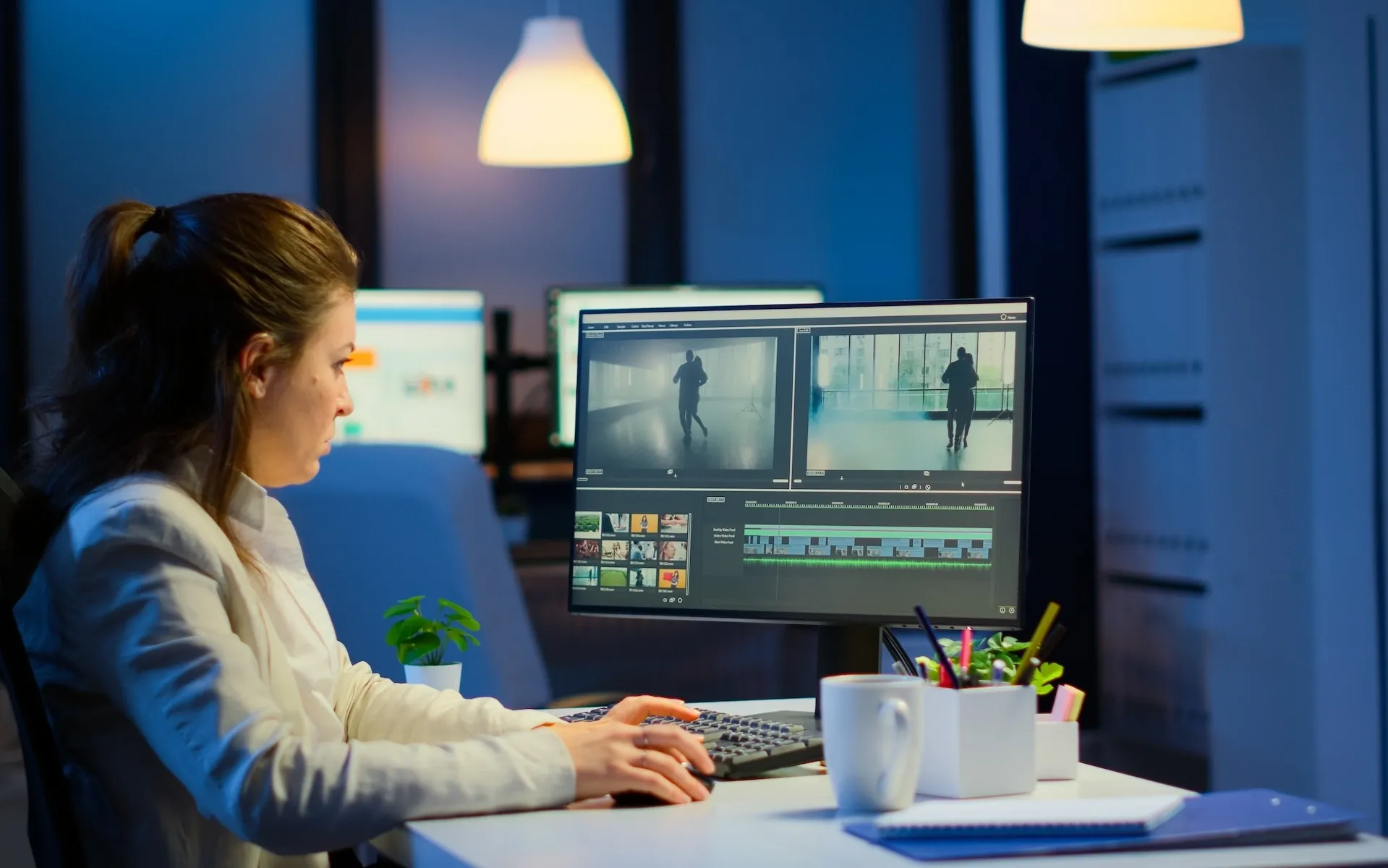What is B-roll and how can you use it in your project?
B-roll can help you out of a tight spot, but it’s more than just backup footage. Learn what B-roll is, how to shoot it, the best examples, and more.

B-roll is more than just cut-and-pasting assets from Adobe Stock — it’s a key part of the filmmaking process. Today, we’ll cover the basics of B-roll.
We’ll discuss:
- What is B-roll?
- Where does the definition ‘B-roll’ come from?
- Why is B-roll important?
- Does B-roll include sound?
- What’s the opposite of B-roll?
- How to get good B-roll footage
- What to do when you don’t have enough B-roll
What is B-roll?
B-roll is video or still-image content that complements your core footage. It’s not always included in a shot list, and can come from a range of sources. You could film B-roll in the same session as principal photography, send a separate crew out to capture bespoke B-roll, or use archival and stock footage.

For example, a conversation shot in an old-fashioned American diner would focus on two people sitting in a booth. That would be the primary footage, probably shot in an over-the-shoulder style.
The B-roll would likely show coffee machines whirring, traffic passing outside, shuffling feet in the queue. These extra details, the crumbs around the edge, give the footage context and depth, building a more complete world for the viewer. B-roll can also be used to smooth over dead air — mostly in interview settings — or for plot-related cutaway shots.
One of the B-roll greats is the opening credits for Twin Peaks, the beloved ‘90s TV show. Nothing too flashy — just a B-roll sequence offering a glimpse into the town of Twin Peaks. The vibe is incomparable, and sinks viewers into the setting before any action unfolds.
Where does the definition ‘B-roll’ come from?
The term ‘B-roll’ goes way back to the early twentieth century, blossoming alongside a young Hollywood. In those days, you’d shoot footage with actual rolls of film stock. This made video editing trickier as you’d physically cut and stick the film together. This usually resulted in a visible line between the two pieces of footage.
Filmmakers used B-roll to get around this. They’d take another roll of film, shoot with that, and place it between the two pieces of film they were stitching together. This created a smoother, if not always perfect transition, leading viewers’ eyes away from the initial blemish.
This is why B-roll may also be called ‘safety footage’ or ‘supplemental footage’.

Why is B-roll important?
B-roll isn’t technically ‘needed’ nowadays, as the majority of content is filmed digitally — even modern filmmakers using analog equipment can digitally remove blemishes. However, B-roll is still used not only to paper over those cracks, but to give narrative cues. It can provide establishing shots and transitions, while still offering the ‘cut and paste’ solution it was built upon.
Check out the below shot from Ridley Scott’s Gladiator. The pan across the crowd might not be essential, but it’s cinematic B-roll, epic B-roll. It adds scale to the scene and lets viewers know that the crowd is indeed entertained.
Does B-roll include sound?
B-roll is generally shot without sound. That might seem unusual, but think about what you’re using it for: superimposing it over your main footage, which already features sound. B-roll with sound would be distracting and impractical — you’d have to spend time muting the B-roll.
Your B-roll may not include sound, but that probably doesn’t go for the rest of your production. Find the perfect match with Epidemic Sound’s catalog of more than 50,000 tracks and 200,000 unique sound effects and variations.

What’s the opposite of B-roll?
The counterpart of B-roll is just principal photography. This used to be called A-roll, but that term has since fallen out of fashion — B-roll is B-roll, and the rest is the main event.
How to get good B-roll footage
Now that we’ve learned the definition of B-roll, why it’s important, and how it’s used, let’s run through some nifty tips for capturing your own.
Variety is the spice of life
Experiment with different camera shots, locations, shot lengths, and more. Nothing takes viewers out of an experience quite like noticing the same piece or style of B-roll.
Don’t stick to the rules
Sometimes, an establishing shot can make an impact in the middle of a scene, despite traditionally coming at the start of a sequence. Don’t feel like you have to stick to the rules — as long as you know them, you can judge when to bend them.
Take this scene from Friends, in which a co-worker has the nerve to eat Ross’ sandwich. Ross screams, and we flip to a few shots that would typically be establishing shots — they’re scene-setting, grand views of New York City. In this instance, they’re played for laughs, exaggerating how loud Ross screamed.
Consider details
Specific close-up shots, like insert shots, can lend B-roll a certain weight — they can draw attention to a topic or underlying theme. Pencil in specific B-roll shots alongside spontaneous footage.
Context is everything
If you’re shooting a scene in a busy street, capture tons of B-roll from the surrounding area. When filming an interview, try to film a bunch of tiny details away from the subject. Think about anything visually exciting in the background, set-dressing that could add flavor, and so on.
Keep the camera rolling
Potential B-roll slips away when you’re not shooting. If you have the means, keep the camera rolling — what you think is dead air might be top-tier B-roll.

Bagging as much B-roll as possible provides more options in the post-production process. Peter Jackson, who directed massive movies like The Lord of the Rings, King Kong, and The Lovely Bones, loves this approach. He shoots scenes from as many angles as he can, securing maximum coverage and allowing freedom in the editing suite.
Find B-roll elsewhere
Stock or archival footage can work a treat for non-fiction content like documentaries. Try a tactical B-roll cut to a subject in their youth, or a flashback to a historic event — these are snappy, effective ways to use B-roll.
See this in action via the trailer for Davis Guggenheim’s documentary, Still: A Michael J. Fox Movie. Guggenheim dug up archival footage from Fox’s life, from Back to the Future clips to home videos and promotional appearances. Sprinkled within the interview footage and triumphant narrative, this archival B-roll paints a broader picture for viewers.
What to do when you don’t have enough B-roll
If you’re tight on time and have run out of B-roll, don’t sweat it. The beauty of B-roll is that it isn’t primary footage, so can be manipulated and spliced to a reasonable degree. Consider piling effects onto your B-roll, reversing it, kicking it into slow-motion, or any other tricks you may have up your sleeve. As long as your B-roll edits stylistically match the rest of your footage, you’re golden.
Some creators and outlets reuse B-roll during the same segment, which is an acceptable practice. It’s more common in factual content like news broadcasts, but we’d recommend keeping your work fresh and avoiding duplicate shots where possible.
Another way to smoothen your B-roll content is with music. After all, the soundtrack can make or break your content — why let one needle-drop derail your project? Epidemic Sound’s got you covered.
Our catalog is high-quality, affordable, and safe. An Epidemic Sound subscription goes beyond royalty-free music, removing the headache of licensing and freeing you up to do what you do best. You can enjoy the safety of our license hand-in-hand with our massive catalog of 50,000 tracks, covering just about every genre you can think of. You’ll also gain unlimited access to our advanced search functions — finding the right sound’s never been easier.
It’s better than royalty-free. It’s worry-free. Get started with Epidemic Sound below.

Are you a filmmaker? We've got you covered with background music for videos, including:
Take your video editing to the next level with our massive catalog of music for filmmakers.

